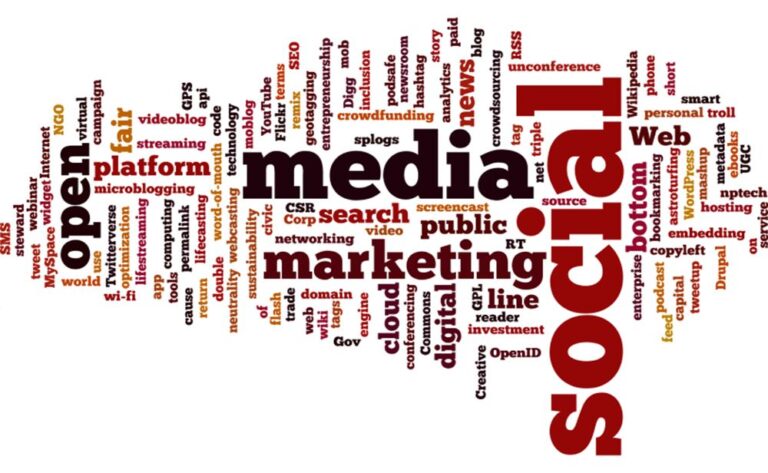How to Create A Digital Marketing Strategy In 10 Steps (Updated 2023)
Simply promoting websites online is what constitutes a digital marketing plan today. Isn’t it clear-cut? Hold up a second.
It has come to my attention that promoting a website in the digital space may be done in a variety of various methods. And this is exactly where the most cutting-edge approaches to digital marketing come into play.
There are major players, such as search engine optimization (SEO), online advertising tactics, social media marketing, and the like. The list goes on and on. Each category denotes a distinct field of expertise in addition to a particular collection of abilities and standards of conduct. To put it another way, what goes on in search engine optimization is not at all like what goes on in digital advertising.
Because of this, developing a strategy for digital marketing is not exactly a piece of cake.
Because each website is unique, the most effective digital marketing tactics are those that are developed through a process that is custom-tailored.
In this post, we will discuss several aspects of marketing in order to demonstrate how to develop a digital marketing strategy. After providing a more in-depth explanation of the strategic approach, we will then present a step-by-step guide to addressing the fundamentals.
The following is a condensed version of a walkthrough of the 10 steps involved in developing a strategy for digital marketing:
• Step 1: Create a customer persona
• Step 2: Determine Your Objectives and Equipment
• Step 3: Concentrate on Blogging
• Step 4: Assess Your Pre-Existing Digital Marketing Channels
• Step 5: Automate Your Marketing
• Step 6: Master Mobile Optimization
• Step 7: Make It Simple For Customers To Contact You
• Step 8: Make Use Of The Appropriate Technology
• Step 9: Confirming your differentiators.
Step 10: Monitor how far you’ve come.
What exactly is meant by the term “digital marketing strategy”?
If the answer that “online marketing for websites” did not provide enough illumination for you, a clear explanation of what a digital marketing strategy is will provide the foundation upon which we can build our discussion of the fundamentals of this field.
It is good to conceive of your strategy as more of a digital marketing road map or action plan for establishing your spot on the internet and growing the scope of your online reach. The internet is, without a shadow of a doubt, an extremely valuable piece of real estate.
It is the location where your customers are shopping, interacting, and doing research. In point of fact, seventy-eight percent of customers check out a company’s website before even setting foot in the establishment (Cision). A weak internet presence can have a significant and detrimental effect on a business.
The most up-to-date methods of digital marketing will help you increase brand awareness and attract customers through the large strategies that were discussed earlier. These include SEO-powered organic search, paid ads (ppc in digital marketing can be extremely important; however, we will discuss this topic in more detail later), website design, and social media.
It is also important to emphasize that every company and website is unique in its own way. The most effective plans for digital marketing take this into consideration and are devised with certain objectives in mind. These objectives are able to be achieved, tracked, and improved upon by making use of specific tools and channels.
To briefly recap what you’ve learnt about the digital marketing roadmap you’ve developed:
• It is a strategy that will raise awareness about your business
• It is a way to attract more customers and increase your brand reputation
• It uses specific media and tools to tailor a plan for your particular business
• It is a way to stake your claim on the valuable real estate of the internet
• It is a series of actionable ways to expand your online presence
• It is a strategy that will raise awareness about your business
• It is a strategy that will raise awareness about your business
• It is a strategy that will raise awareness (no one size fits all)
These are the six pillars that should support your digital marketing approach.
The one defining characteristic of the internet is its incessant capacity for development, expansion, and adaptation. Even though this is really exciting, it also indicates that there may be a steeper learning curve and a constant requirement for updates.
It is to be expected that the realm of online marketing will continue to develop, broaden, and undergo alterations. There is obviously more than one approach to design a successful digital marketing strategy that places your website in the best possible position on the internet to maximize results in today’s day and age.
The good news is that although though each of these areas belongs to a different marketing category and employs a different internet advertising strategy, they are all capable of collaborating to help you reach your objectives and expand your company.
A digital marketing strategy can be broken down into the following six primary areas of focus:
1. Content marketing
2. in-stream marketing or advertising
3. Management of pay-per-click advertising (PPC)
4. SEO (Optimization for Search Engines) (SEO)
5. Marketing through social media platforms
1. A marketing strategy focused on digital content
In the context of your digital marketing plan, content marketing refers to the process of creating and publishing information that is helpful to your target audience online. Putting out content that has a high value is a method that can attract, educate, and keep your target audience interested in what you have to say. It also has the potential to promote you as a thought leader in your field of work.
But what exactly do we mean when we say “content”? Where does it end up, exactly?
Most of the time, when people think about content, the first thing that comes to mind is written content. Written material, which can include SEO content authoring, can be presented in a variety of formats within the context of content marketing. These formats include blogs, newsletters, e-books, case studies, product guides, social media postings, and more.
But in addition to videos and podcasts and infographics and Google advertisements and other things, there are also other kinds of material. For example:
Particularly useful content is video content, which has been dubbed “the future of content marketing.” Quick illustration: when it comes to learning about a product or service, 69% of people would rather watch a video than read about it (SmallBizGenius).
As for where your content will be placed, the most of it will be on your website. In point of fact, it will be to the advantage of your digital marketing plan if the information you produce can be shared in different locations and through multiple platforms.
Every piece of material will eventually be published online, frequently on many platforms (in multiple locations). For instance, there must to be a category on your website devoted to a blog. You will produce content there that is well-written, of high value, and optimized for search engine optimization (SEO) in order to create reputation and increase visibility.
When it comes to video, you may choose to post your content to YouTube, after which you may choose to embed it in a blog, share it on Twitter, include it in your monthly email newsletter, and so on.
No matter what kind of company or agency you run, content marketing should always be an integral aspect of your digital marketing strategy (LinkedIn).
2. in-stream marketing or advertising
Native advertising is one of the tactics for online advertising that makes use of paid media. This type of advertising is also known as advertorials, sponsored content, or “sponcon.”
Native advertising is a sort of online marketing that combines editorial material with commercial messages shown on websites and other digital platforms in a way that is seamless and unobtrusive to the user experience.
Because it produces a better and more integrated user experience, native advertising is becoming increasingly popular as one of the most recent trends in digital marketing methods. Native advertisements are less annoying to users than banner ads or standard pop-up windows. Customers will be exposed to promotional advertisements but the experience will not be annoying or cumbersome thanks to the ads’ flawless integration into the organic material they are now perusing.
Native advertising can take on a variety of forms, each of which is distinct from the others. Your goals will determine the specific manner in which each type can contribute to the success of your digital marketing plan.
• In the stream and within the content. When we talk about “feeds,” we’re referring to social media and online news sources like Instagram, Facebook, and Twitter. The native advertisements are blended in with the organic content and are distributed via feeds, articles, blog posts, and other types of online material.
• Content recommendations. Suggestions that are presented at the conclusion (or along the side) of a page on a website. These suggestions can recommend related items, services, content, and more.
• Enhanced visibility in search results. Have you ever paid attention to the listings that display at the very top of the results page when you conduct a search on Google? If you look very carefully, you’ll be able to make out the label that says “Ad.”
3. PPC in digital marketing
The abbreviation PPC is commonly used to refer to pay-per-click (PPC) advertising.
PPC (pay-per-click) advertising in digital marketing can be an effective component of your entire strategy, and it is connected to the discussion of promoted search listings that was presented earlier. PPC advertising makes use of online advertisements; advertisers are charged a fee each time a user clicks on one of their adverts.
Potential clients will be able to find you when they search for relevant keywords if you pay to have your website or offering displayed at the top of a search engine results page (most often Google, but also Bing, Yahoo, and on social media channels). The amount of the charge is determined by the number of persons who click the advertisement.
PPC in digital marketing is a vital tool to have in your toolbelt because the greatest digital marketing plans combine a range of different methods working together.
When properly implemented, pay-per-click advertising (PPC) can be beneficial to any type of company, from advertising firms to radio broadcasters. However, some people have a tendency to avoid paid internet advertising techniques.
4. SEO (Optimization for Search Engines) (SEO)
The process of optimizing a website so that it is favorable to search engines and draws organic traffic to the website is referred to as search engine optimization, or SEO for short. It is a crucial component of any plan including digital marketing. In point of fact, organic search is responsible for more website traffic than all other sources put together (Ahrefs).
Consider the following proverb: “Does a tree really make a sound when it falls in the forest if there is no one around to hear it?” Does it even make a difference if you have a stunning website and an incredible product or service to provide if no one knows you exist?
Return on investment (ROI) is an important consideration for the most effective digital marketing strategy. Your return on investment (ROI) will be very low if all of the resources you put into your website are in vain since no one can find it online.
According to Forbes, some components of SEO include the following:
• Product pictures
• Backlinks
• Social Media
• Keywords
• Meta Tags
• Content
• Backlinks
• Social Media
• When agencies or companies are considering how to establish a digital marketing plan, the search engine optimization (SEO) component can frequently appear to be intimidating. What are the criteria that determine the rankings for local SEO? What kinds of algorithmic shifts should I be concerned about? Which keywords will make it easier for my audience to locate me? Without a doubt, Search Engine Optimization (SEO) can be one of the more challenging aspects of your overall digital marketing plan.
The good news is that there are a lot of resources available nowadays, ranging from SEO white-label services to instructional articles.
5. Social media marketing
For the purposes of a digital marketing plan, social media marketing is the activity of promoting a product or service on social media platforms, as well as distributing content that creates confidence in the brand and awareness of the brand. You can get this information from most, if not all, of the top blogs and websites devoted to social media, which will tell you that this is typically accomplished through the use of a social media management platform. A significant number of the most recent digital marketing tactics make use of the following key social media platforms:
• TikTok
• YouTube
Not only can a successful social media marketing plan aid with promotion or advertising, but it also. It has the potential to be a useful tool that enables companies to engage directly with their clients and potential clients in order to build credibility, foster an affinity, and cultivate brand loyalty.
Put an end to the misconception that all there is to social media is “fun.” It may be an effective ally in monitoring the online reputations of your clients, driving traffic to their websites, connecting directly with customers, and creating new leads—all of which are vital components of an effective digital marketing plan.
6. Email marketing
Email marketing is a strategy that promotes and cultivates relationships with new and existing customers via the use of email communication.
But first things first: you need to work on building up your email marketing list so that you have people to whom you can really send your emails. One method to increase the number of email addresses you have access to is to? It is important to have calls to action, also known as CTAs, on your website and blog to encourage visitors to sign up for your promotions or newsletters.
You can also encourage individuals to give their email addresses through social media and by providing them with an incentive as two more ways to develop your email list and make it a more valuable component of your digital marketing plan.
Email marketing is a strong tool that can be used to keep clients and prospects up to date on new product offerings, discounts, campaigns, and other services. Additionally, a “softer sell” strategy can play an important role in the success of email marketing. The act of teaching, engaging, and offering value to an audience is often overlooked despite being one of the most powerful marketing methods that can be implemented over the internet.
A step-by-step guide to the creation of a digital marketing plan
Now that you have a basic understanding of the most recent digital marketing tactics and concepts, it is time to study the fundamentals of how to develop your very own digital marketing plan; this is true even if you are just starting out in this field.
There are a lot of different aspects that can either contribute to or detract from the effectiveness of your digital marketing strategy, such as personas and the appropriate tools. This section will walk you through the groundwork that needs to be done to ensure that your approach is effective, including the tools and software that we recommend.
Step 1: Create a consumer persona.
In the past, digital marketers would collect both qualitative and quantitative data on the audience they were trying to reach. This data would include demographics such as age, gender, occupation, interests, and location. Recent years have seen a shift toward the use of buyer personas, which has resulted in an expansion of the meaning of the term “possible customer.” At this point, even the most effective digital marketing campaigns are lacking without them.
Buyer personas are a word that are used to describe the ideal client that may be defined by surveying and contacting the pre-determined target demographic. This can be done in order to define buyer personas. Creating your own unique buyer personas is the starting point for the most cutting-edge digital marketing techniques. In order to begin started, you can browse the internet for several free templates.
Step 2: Determine your objectives and available resources
Every experienced marketer is aware of how crucial this stage is at this point. Defining goals is your primary responsibility because a digital marketing strategy will not be successful if it does not have them. Be sure that the goals you’ve developed are appropriate, and make sure that you can measure their progress.
An example of a marketing goal that is not too ambitious:
Next year, you should aim to increase the number of conversions on the website and come up with two different promotional offers.
What exactly is wrong with this objective? That’s right, it can’t be measured at all! How do you plan to evaluate your performance relative to this goal?
The way it should have been put together is as follows:
During the first three months of 2022, you should aim to achieve a conversion rate that is twenty percent higher than it was previously, and you should also develop two promotional offerings, namely a free marketing report and a marketing book. Get them up and running on the internet by the end of February and March, respectively.
Now that we are at that point, assessing the progress is possible. It’s figuring out how to build a digital marketing strategy that works that’s the challenge.
Step 3: Give your attention to blogging.
Even though blogging has been around since the 1990s, even the most cutting-edge digital marketing tactics still incorporate blog posts. Why? Because blogging is one way to generate high-quality material for a website and broaden your reach, and because producing high-quality content is an essential component of any digital marketing strategy.
Blogging serves several important purposes, including driving more visitors to your website, strengthening your profile on social media, competing with other businesses, and ranking all of those long-tail search queries and keywords.
If you have a blog that is regularly updated and that visitors find useful, this indicates that your website will be easily found through the search engines. Additionally, your website can be used as a platform for your online advertising strategies and marketing campaigns if you have a blog that is regularly updated and that visitors find useful. You have the option of seeking support from blog writing services if you do not have the internal capacity to manage blogs yourself.
Step 4: Assess the digital marketing channels that are already in place
Conduct an investigation into the digital properties and channels that you are already utilizing, such as your website, the content of your blog, your social media accounts, word-of-mouth, native advertising, Google Adwords, sponsored advertising, and so on. Ask yourself: how useful were they, and how might you put them to use in the following year? Which methods of web advertising should be improved upon or abandoned entirely?
It is fine if your future approach for developing a digital marketing plan does not include all of these elements; however, it should make extensive use of the ones that proved to be the most successful in the previous year. For instance, if a landing page that you just made has been successful in terms of generating leads, you should reuse it but make as many modifications to it as you possibly can. The same holds true for a variety of additional channels and assets.
Step 5: automate the marketing.
Automation in marketing is becoming increasingly important, and it is only going to grow better as new kinds of technology and software are integrated into the most cutting-edge digital marketing techniques.
Your digital marketing approach can benefit immensely from the use of today’s finest marketing automation tools, which make it simple for you to automate a variety of operations, including content marketing, email marketing, lead generation, and more. Additionally, it is simple to identify marketing automation platforms that are compatible with the customer relationship management system used by your organization, which enhances the overall sales process.
Make sure that you include automated lead generation as part of your digital marketing strategy this year, even if your firm has not yet gotten on board with the concept.
Step 6: Nail mobile optimization
The solution to the question of how to design a digital marketing plan that is fully optimized for 2022 is to take into account mobile devices such as smartphones and tablets. If you are wondering how to do this, the answer is found in this sentence. According to Statista, we are living in a mobile-first world, thus you have no excuse for not optimizing your website for a fantastic mobile user experience.
Mobile optimization ensures that visitors to your website using a mobile device have a positive experience by focusing on page speed, site design, and a variety of other search engine optimization best practices.
Review the mobile responsive design of your website as well as the email templates you use to verify that you are utilizing the most up-to-date ways and that you are providing just the most relevant and up-to-date material.
Step 7: Ease of Access. Make it simple for customers to get in touch with you.
Because conducting business online is all about engaging with prospective clients, the volume of visitors to your website should be significant in order to guarantee positive results. Your digital marketing plan should therefore ensure that your leads and visitors are not required to make unnecessarily large amounts of effort in order to engage with you. Participating in conversations with one’s clientele can be extremely beneficial to a company.
To save yourself time and effort that is not essential, you should check to see that landing pages do not ask for information that is not pertinent. Make sure that the calls to action (CTAs) on the landing page as well as the other pages of the website are easily visible.
Step 8: Utilize the Appropriate Technology
If an inefficient or improper technology is chosen, all of a marketer’s hard work will be for naught.
Tools like marketing automation software and sales intelligence products like the Snapshot Report from Vendasta are included in the most effective digital marketing plans. These tools are also examples of digital marketing tools. There are tools available that can assist you throughout the entirety of the strategic planning process. These tools include ones that assist you in determining your objectives and ones that assist you in monitoring the origins of your website traffic.
Step 9: Confirm your differentiators.
If your business is not distinguishable from others in its industry, you should not anticipate significant increases in revenue. Talk to your clients and find out why they choose your business over the competition by engaging in customer feedback gathering. This will help you modify (or reaffirm) your unique selling proposition.
Every business needs to have a unique selling proposition, or something that distinguishes them from the other companies in their industry. Doing research and putting in the effort to figure out what exactly it entails should be an important component of your digital marketing plan. Then, if necessary, improve your existing points of differentiation. Integrate this message into the road map for your digital marketing strategy.
Confirming the differentiators of your offering is the first step in developing a digital marketing plan that is truly customized to your product or service.
Step 10: Tracking your process.
In order to guarantee that your digital marketing approach is producing the desired results, continuous monitoring needs to be carried out. To accomplish this, teams who are capable of delivering this assignment are first assigned. Always look for methods to develop yourself, and don’t forget to draw lessons from your past experiences.
The process of establishing a digital marketing strategy involves a lot of work, but if you have a plan that is efficient and well thought out, you will find that it is much simpler to complete.
At Vendasta, our area of expertise is in providing a platform that is complete from beginning to finish for enterprises who sell digital goods and services to small and medium-sized organizations. Included in this are our “white-label” marketing services, which allow you to resell them under your own brand. Together with our proprietary software and tools, as well as our in-house team of marketing strategists and content writers, we are able to determine and develop the digital marketing strategies that are most likely to provide the desired outcomes.







